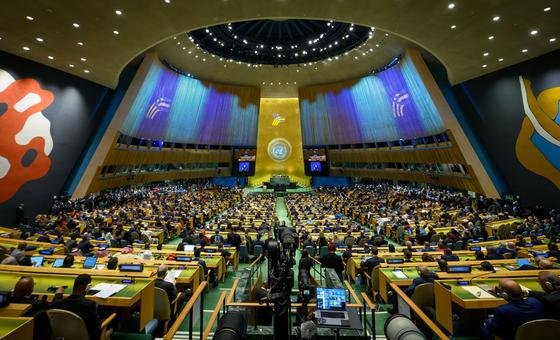The agreement has been described as a blueprint for addressing challenges in the 21st century arising from issues ranging from conflict to climate change and from human rights to conflict.
However, some countries, including North Korea, Russia and Venezuela, called for some amendments to the draft memorandum of understanding, but it was not accepted.
The Memorandum of Understanding for the Future outlines five key areas: sustainable development, international peace and security, science and technology, youth and future generations, and global governance change. This is considered an important aspect because multilateral financial institutions, and even the United Nations itself, have proven somewhat limited in finding solutions to twenty-first century problems.
The main decisions taken by member countries by passing the treaty for the future include:
- Accelerating energy integration into the Sustainable Development Goals (SDGs) and the Paris Climate Agreement. Both of these agreements were signed in 2015, and in both cases progress toward their goals has been slow, even missing important milestones.
- Accelerate action to phase out the use of fossil fuels in the energy system fairly and equitably this decade and achieve net zero emissions by 2050.
- Listening to youth voices and including them in decision-making processes at national and global levels.
- Building strong partnerships with civil society, the private sector, local and regional authorities and beyond.
- Redouble efforts to build and sustain peaceful, inclusive and just societies and address the root causes of conflict.
- Protection of all civilians caught up in armed conflict.
- Accelerating the implementation of our decisions on women, peace and security.
Path to a better future
The agreement also includes the first global agreement on the international regulation of artificial intelligence (AI) as part of the Global Digital Compact.
The Digital Compact is based on the idea that technology should benefit everyone.
The Digital Compact encourages partnerships and networks to increase AI capacity in developing countries
Governments of countries have been asked to take responsibility for forming an impartial global scientific panel on AI.
The Future Agreement also includes the Future Generations Declaration, which reiterates the UN Charter’s call to protect future generations from the horrors of war.
Also, for the first time, governments have committed to taking decisions made in the present with the interests of future generations in mind.
More information about the contract for the future can be found here.
new opportunity
Following the passage of the resolution, UN chief Antonio Guterres said that the Pact of the Future and all its related articles open the way to new possibilities and opportunities.
“People everywhere are hoping for a future of peace, dignity and prosperity, they are calling to address the climate crisis, end inequality and address emerging risks that threaten everyone,” he said.
“They see the United Nations as an essential organization to find solutions to these challenges.”
Antonio Guterres also said that “future summits pave the way for international cooperation that meets these expectations… Let’s get to work.”
Discussion month
The passage of the future treaty was the result of months of negotiations with the help of Germany and Namibia.
After the passage of this memorandum, the President of the United Nations General Assembly, Philemon Young, urged the countries to move forward together in the spirit of solidarity and multilateral cooperation.
“The path we have chosen must lead to a future where human dignity is respected and human rights are upheld,” he said.
“A future where peace means the complete absence of conflict, and which is based on justice, inclusion and equality.”

